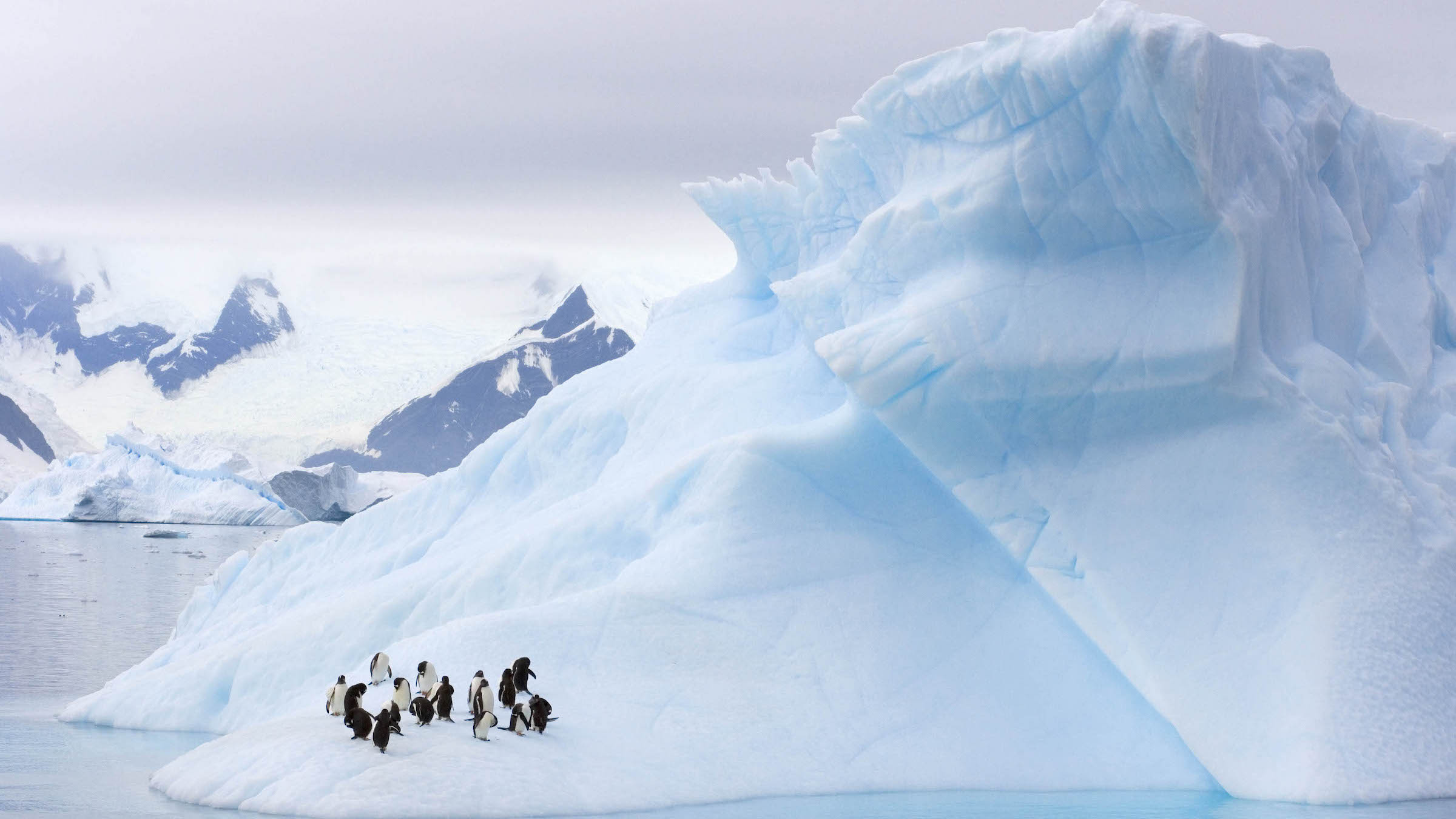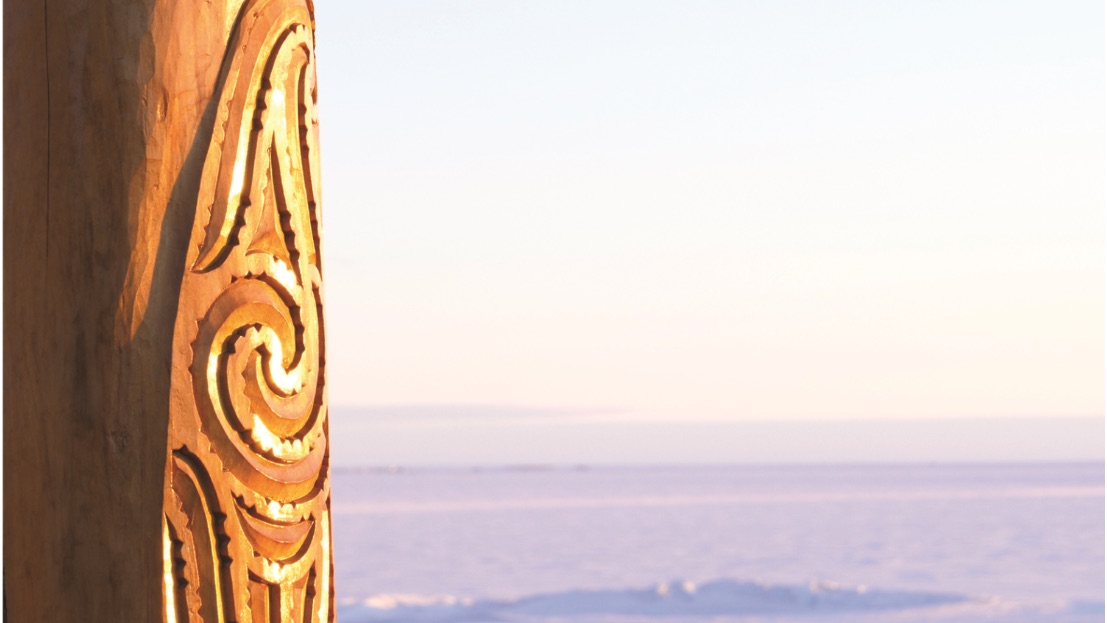Antarctica was likely discovered 1,100 years before Westerners 'found' it
Polynesians may have discovered Antarctica in the early 600s.

The first humans to discover Antarctica weren't seafaring Westerners but rather Polynesians, who found the coldest continent 1,300 years ago, a new study suggests.
Researchers in New Zealand assessed oral histories about a Polynesian explorer spying an icy, mountainous continent untouched by the sun. To find the evidence, they sifted through "gray literature," or historical reports that weren't published in peer-reviewed journals, and integrated them with Indigenous oral histories and artwork. This deep dive into Indigenous history revealed that Polynesians likely discovered the southernmost continent more than a millennium before Westerners first spotted it in 1820, according to most historic reports.
"Māori (and Polynesian) connection to Antarctica and its waters have been part of the Antarctic story since circa [the] seventh century," the researchers wrote in the study. After Westerners first reached Antarctica in the 19th century, a handful of Māori joined their voyages as crewmembers and even medical professionals, although prejudice against Indigenous people at that time was prevalent, the researchers said.
Related: 50 amazing facts about Antarctica
Antarctica has eluded humans since ancient times. The ancient Greeks theorized that Antarctica existed, as a lower continent would likely be needed to balance out the Arctic in the Northern Hemisphere, they reasoned, according to the American Museum of Natural History (AMNH) in New York City. The Greeks named this hypothetical continent "Antarktikos," or the land "opposite of Arktos," the bear-shaped constellations (Ursa Major and Ursa Minor) in the north.
Ocean explorers, especially during the Age of Exploration during the 1400s to 1600s, tried to find Antarctica, including Captain James Cook in the 1700s. But none succeeded. According to most history books, Antarctica was first spotted in 1820, although it's unclear who saw it first; it could have been an officer in the Imperial Russian Navy, an officer in the U.K's Royal Navy or an American sealing captain, according to Encyclopedia Britannica.
However, according to the new study, published online June 6 in the Journal of the Royal Society of New Zealand, these Westerners were latecomers.
Sign up for the Live Science daily newsletter now
Get the world’s most fascinating discoveries delivered straight to your inbox.
According to previously dated 1,300-year-old oral histories from different Māori groups, the Polynesian explorer Hui Te Rangiora (also known as Ūi Te Rangiora) and his crew voyaged into Antarctic waters aboard the vessel Te Ivi o Atea, study first author Priscilla Wehi, a conservation biologist at the University of Otago in New Zealand, and colleagues wrote in the study.
"In some narratives, Hui Te Rangiora and his crew continued south. A long way south," the researchers wrote. "In so doing, they were likely the first humans to set eyes on Antarctic waters and perhaps the continent."
If this early 600s date is correct, Indigenous explorers found Antarctica even before the Māori arrived in New Zealand between 1200 and 1300, the researchers noted. At that time, the ancestors of the Māori lived in Polynesia.

The navigational accomplishments of Indigenous peoples in the Pacific are "widely acknowledged," the researchers wrote. For instance, New Zealand ethnographer Elsdon Best documented the Māori from the late 1800s to early 1900s and found that the Māori traversed the Pacific as easily as Western explorers might cross a lake, the researchers said.
The team found supporting evidence by looking at the Māori name "Te tai-uka-a-pia," in which "tai" refers to "sea," "uka" means "ice" and "a-pia" means "like the arrowroot," which looks like snow when it's scraped, according to an 1899 report by ethnologist S. Percy Smith.
In his report, Smith wrote how the Māori wanted to see the remarkable sights that the voyagers aboard the Te Ivi o Atea had reported seeing. These "wonderful things" included "the rocks that grow out of the sea … ; the monstrous seas; the female that dwells in those mountainous waves, whose tresses wave about in the water and on the surface of the sea; and the frozen sea of pia, with the deceitful animal of the sea who dives to great depths — a foggy, misty and dark place not seen by the sun," Smith wrote. "Other things are like rocks, whose summits pierce the skies, they are completely bare and without vegetation on them."
This mysterious place was likely Antarctica, Smith wrote. The "tresses that float on the monstrous waves" were likely Southern Ocean bull kelp, while the other descriptions might depict marine mammals and icebergs, which Polynesian explorers had never seen.
Related: Photos: Renaissance world map sports magical creatures
While scientists haven't historically relied on the Indigenous sources used in this study, such as oral traditions and carvings, the practice is becoming more common, according to Smithsonian magazine. For instance, Stephen Augustine, hereditary chief of the Mi'kmaq Grand Council and associate vice president of Indigenous Affairs and Unama’ki College at Cape Breton University in Nova Scotia, Canada, explained how oral history was preserved among the Mi'kmaq.
"When each elder spoke they were conscious that other elders would serve as 'peer reviewer' [and so] they did not delve into subject matter that would be questionable," he wrote. "… They had to reach back to the teachings of their parents, grandparents and even great-grandparents. These teachings were shared in the circle and these constituted a reconnaissance of collective memory and knowledge."
Wehi and colleagues also documented Māori involvement in the Western exploration of Antarctica. During the 18th and 19th centuries, there was a "growing European impetus to discover, explore and name unexplored parts of the world," the researchers wrote in the study. "These expeditions were fueled by nationalism, economic opportunism and political and scientific interests." However, except for a few notable cases, for instance when a few crewmembers and even a doctor with Māori heritage joined various European voyages to Antarctica, the Māori were often excluded.
Nowadays, Māori scientists do research in Antarctica, and artwork of Māori cultural symbols can be found near research stations. But there's still more work to do to understand how "Antarctica features in the lives and futures of Indigenous and other under-represented communities," the researchers wrote in the study.
Originally published on Live Science.

Laura is the archaeology and Life's Little Mysteries editor at Live Science. She also reports on general science, including paleontology. Her work has appeared in The New York Times, Scholastic, Popular Science and Spectrum, a site on autism research. She has won multiple awards from the Society of Professional Journalists and the Washington Newspaper Publishers Association for her reporting at a weekly newspaper near Seattle. Laura holds a bachelor's degree in English literature and psychology from Washington University in St. Louis and a master's degree in science writing from NYU.









